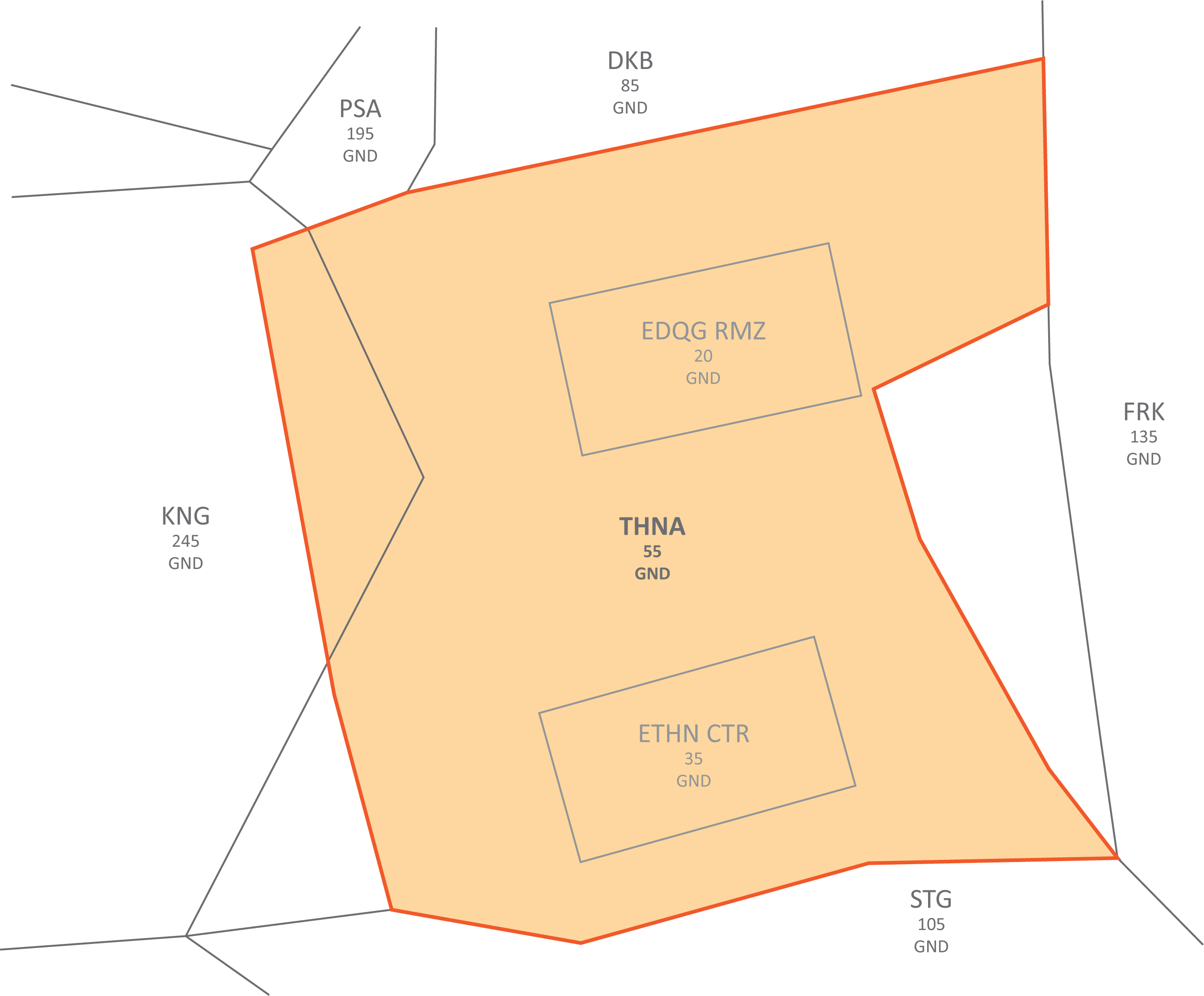Approach
Stetten Radar is responsible for all airborne traffic within the Stetten approach sector as well as coordinating all enroute clearances for IFR departures out of Niederstetten airport.
Stetten Radar shall always inform the controllers of EDGG sectors Dinkelsbühl, König, and Stuttgart as well as EDMM sector Franken when opening and closing the position.
Airspace
The airspace controlled by Stetten Radar is class E which is lowered to 1000ft AGL in the majority of the area of responsibility with small sections of class E lowered to 1700ft AGL in the North and Southeast.
Niederstetten departure procedures
Enroute clearances
Enroute clearances must always be coordinated with all concerned adjacent sectors. Exact routings to the first fix in the flight plan must be adapted to the individual traffic situation but usually a DCT to the first waypoint is the best solution. The initial climb shall always be at least 3500ft and should not exceed 5000ft. Initial flight levels beyond the upper boundary of the Stetten Radar sector must be coordinated with all concerned sectors. All IFR departures shall use the applicable OID for the departure runway.
The enroute clearance will be requested by Stetten Tower and has to be communicated to Stetten Tower once it has been coordinated. Stetten Tower will then relay the clearance to the pilot.
Departure release
During 06 operations, Nörvenich Radar shall obtain a further departure release from DKA before granting a departure release to Nörvenich Tower. If possible, Nörvenich Radar should also instruct Nörvenich Tower to hand off departures directly to DKA.
Transfer to civilian ATC
Handoffs for departures shall always be coordinated individually (preferably while coordinating the enroute clearance) and then take place as agreed, but usually a handoff at the sector border is the best solution.
Niederstetten arrival procedures
Transfer from civilian ATC
Handoffs for arrivals shall always be coordinated individually and then take place as agreed. Stetten Radar should, whenever possible, approach civilian ATC with a proposal for the handoff ahead of time, but usually a DCT to the respective IAF (07 operations: NIBKO, 25 operations: TIMLO) at 5000ft with a full release is the best solution.
Approach
Niederstetten has an RNP approach to both runways as well as an ILS approach to runway 25.
During 25 operations, the ILS approach should be used primarily; however, there is also a PAR approach available for both runways.
Since Stetten Precision is currently not implemented on VATSIM, PAR approaches can only be conducted if traffic levels permit - if necessary, Stetten Radar can coordinate with civilian ATC to keep other inbound traffic outside of the airspace while a PAR approach is taking place; whether this is possible, however, depends on the current workload of civilian ATC.
Giebelstadt departure procedures
Enroute clearances
Pilots shall always be cleared on the applicable SID to their first waypoint depending on the runway in use. The initial climb is always 5000ft via SID.
The enroute clearance will be requested by Giebelstadt Information who will in turn relay the clearance to the pilot.
Transfer to civilian ATC
Departures shall be handed off to Langen Radar as soon as possible to enable a continuous climb.
Giebelstadt arrival procedures
Transfer from civilian ATC
Handoffs for arrivals shall always be coordinated individually and then take place as agreed. Stetten Radar should, whenever possible, approach civilian ATC with a proposal for the handoff ahead of time, but usually a DCT to COSJE at 5000ft or the lowest available flight level is the best solution.

